Most people imagine what their ideal home would look like if they had unlimited resources to spend on construction. There are so many talented people who can take something rotten and old and transform it into something new and lovely. It's amazing how many folks out there have taken mundane vessels or aging trucks and turned them into spotless, opulent houses.
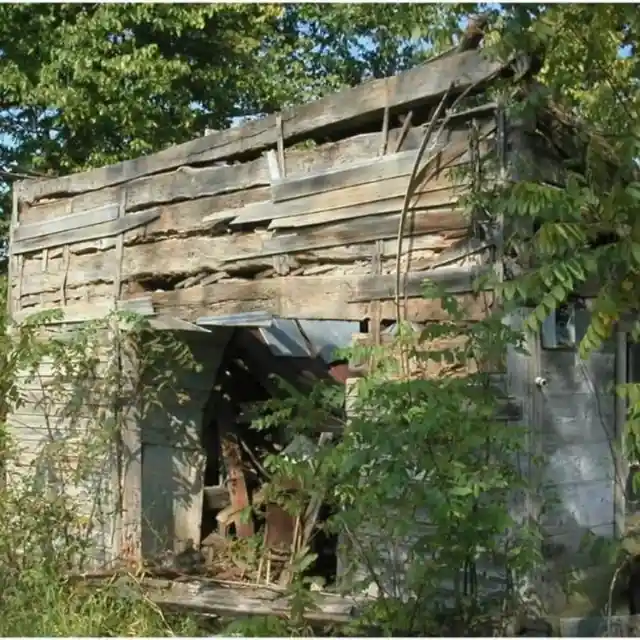
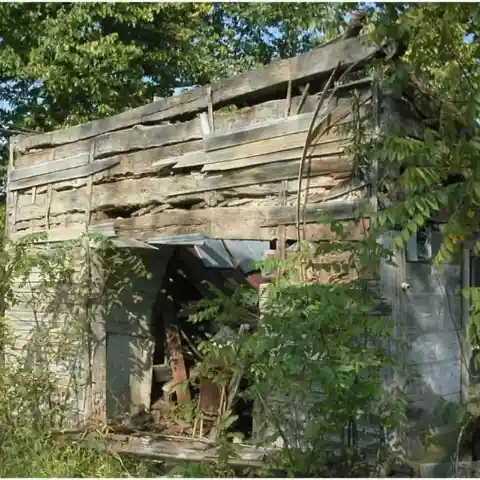
Richard Aiken poured his life savings into making a life for himself away from the city. Aiken transformed a deteriorating 1830s cabin into his dream home for about $100. He decided to restore the cabin but, after so much work, learned how much labor, trouble, blood, sweat, and tears it would take. However, the result was incredible.
This Is Where It All Started
This self-described "vegan hillbilly" originally came across this decaying cabin on a random trek into the Missouri woods. He stopped to examine the aging structure and saw something romantic in it as well as great potential.
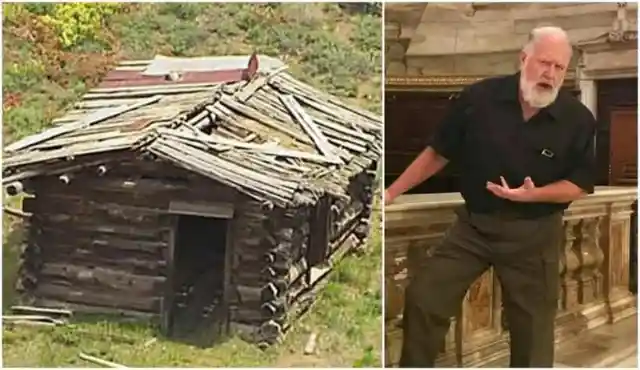

At first, he didn't know what kind of work the cottage would need, but he knew he wanted to buy a remote place. Aiken would be shocked by the transformation a pile of planks would see after his ten years of hard work, sacrifice, and tears.
Aiken Is A Natural Achiever
Long before he dubbed himself a "hillbilly vegan" and began his restoration work, Aiken lived all around the country. Throughout his career, Richard, while fairly young, managed to garner a significant number of accolades. He had not only succeeded in creating and nurturing a devoted family, but he was also well-liked in his hometown of Springfield.


He is regarded as a Renaissance man, having completed two doctorates, obtained a medical degree, and even written a book called The New Ancestral Diet. Naturally, Aiken loves diving into new things, and he loves a challenge.
At Peace With The Nature
Richard Aiken worked very hard for his success. Aiken fought hard for his scholarly and professional achievements. But while he succeeded in the worlds of academia and business, his true love was nature and the world.


Aiken was always attracted to nature and the wild and had been an almost-lifelong vegan. He always spent a lot of time in the nearby woods and forests, but it wasn't until he said he wanted to live in the wilderness that his family realized how much he liked being in the great outdoors. His family respected the choice, even if it was unexpected.
Dealing With New Environment
Because Aiken was usually such a pragmatic man, his family found his woodland project somewhat worrisome. Taking time off is one thing, but deciding to relocate into the woods was an entirely different matter.

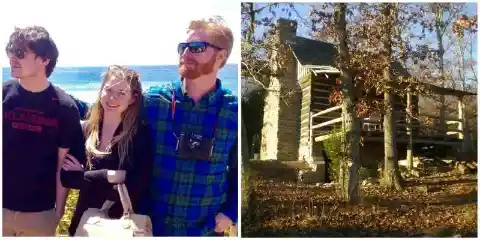
Because they were a wealthy family, they had become accustomed to a particular lifestyle and didn’t feel suited to the rough and tumble nature of the woods. They could deal with the fact that he enjoyed the outdoors, but they couldn't bear the thought of him just packing up and moving into the woods. But ultimately, it was his choice.
Wild and Free
Living outdoors can be dangerous, especially if you're living out there alone. That much is true. Richard's family was well aware of this and concerned that his age would get him into trouble. He was 65 when he decided to try and buy a cabin in the wilderness, after all.
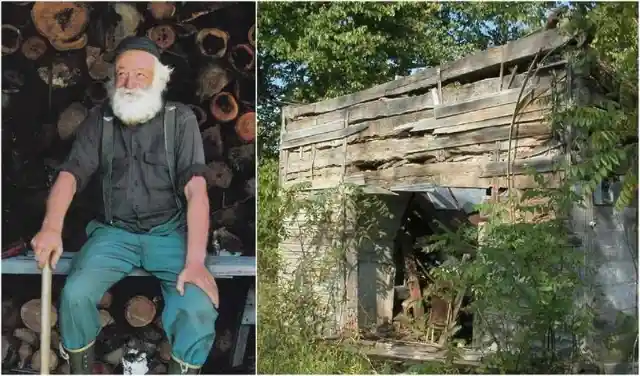
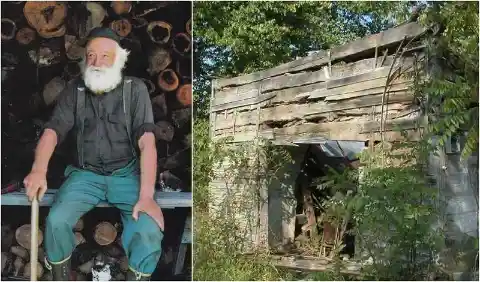
His family was skeptical and argued against the decision. However, the "vegan hillbilly" stuck to his principles and his plan. He had made up his mind to live off the land. But his desire was still being blocked by one obvious impediment.
Think Outside The Box
Who doesn’t occasionally dream of setting up in the wilderness for a simple retirement living in nature? The irony was that you have to be financially capable of making such a move. It’s not like you can just go out there and find everything you need to make it work.
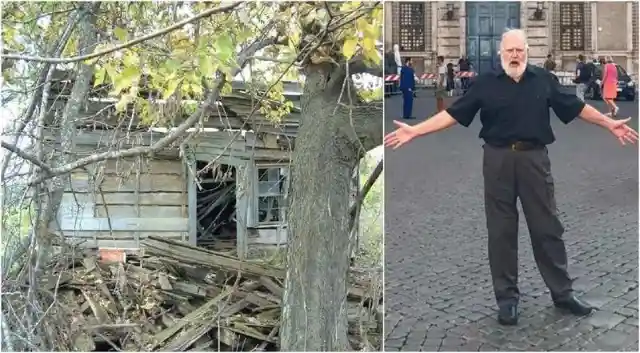
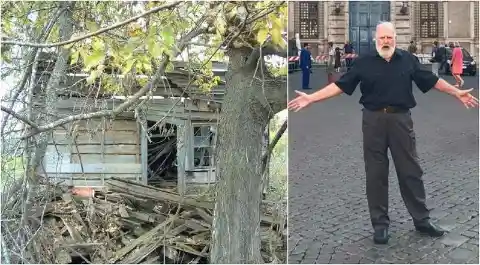
Richard wasn't poor, but since he had retired, money wasn’t exactly raining down. Contrary to popular belief, purchasing land and constructing a house in the woods is expensive. Richard now needed to consider his options and use his creative thinking skills.
A Friend In Need
With his mind entirely made up, Richard moved to an old-school method strategy in funding his dream shack. It's often said that it's not what you know but who you know. Richard just so happened to know someone who owned a lot in the woods.


Given Richard's financial predicament, his friend offered to give it to him for no charge. Richard, however, couldn't accept. He decided to pay $100 for the property. Richard finally understood why his friend was so happy to give it away when he saw it for the first time.
So What’s The Catch?
Why would someone want to give a cabin away for free? Richard quickly learned why the owner wasn’t looking to bargain for it. How much of a state could it have been in? Well, the first problem wasn’t the cabin itself.
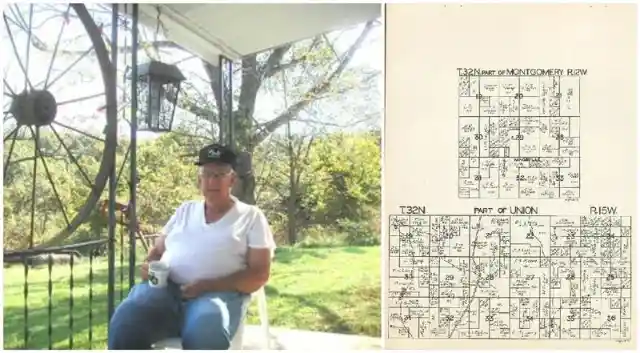
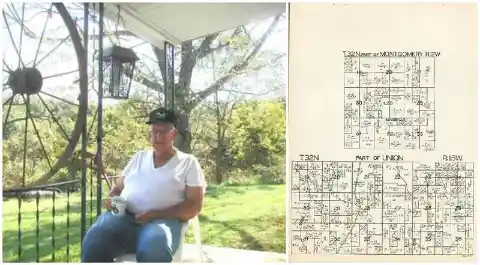
Richard’s friend had practically given it away on one condition. "You can take it for nothing if you haul away all the junk." But when Richard finally caught a glimpse of his new woodland home, he noticed how deteriorated the log construction was.
An Early Realization
Richard wondered if he had made a grave mistake when he first saw his new property. The cabin—if you could still call it that—resembled a pile of firewood more than anything else. He had his work cut out for him in cleaning up the filthy inside and the absence of a roof.

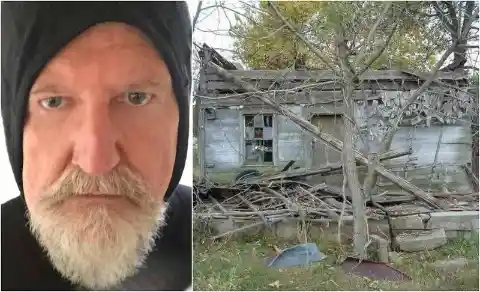
According to a blog post by Richard's daughter, "This is the original 1830s log cottage dad began off with." Soon, Richard knew what to do, but he could only use a few logs because many of them were decaying, and the others would require a significant amount of refinement before they could be used.
Looking At The Positive Side
Richard saw a lot of potential in the old cabin in the woods when others would have simply walked away after a glance. Richard noted that the place was "a great find," describing it as two floors with a huge "pen" around 21–22 feet square.
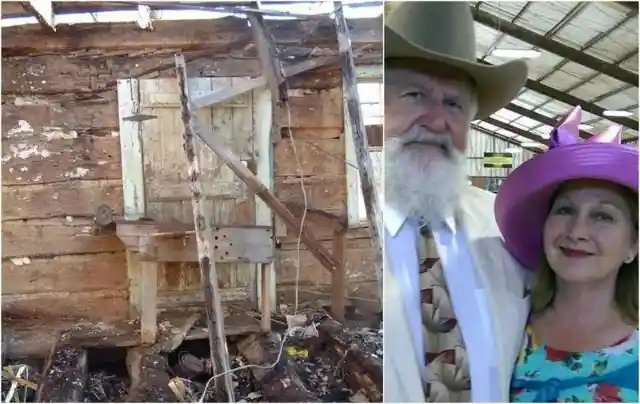
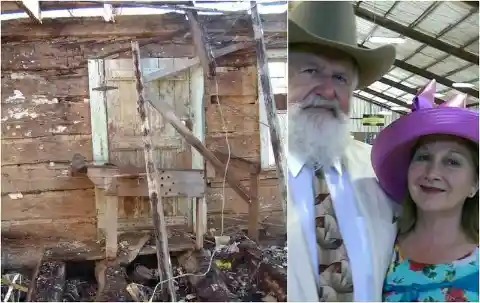
The structure was made up of massive white oak beams that had been hand-hewn and squared with half-dovetail notches. Most of the logs at the core were in good shape, so Richard decided to take on the task and began his "mission impossible" renovation job.
Different Views
Richard carefully inspected the cabin. Going clockwise, beginning in the upper left-hand image, you'll first see the north side of the cabin, then the south side, the west side, and then the east side. Does this look like a livable structure? Not at all.
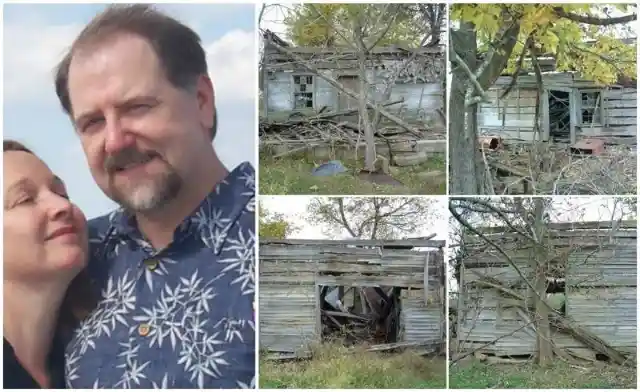
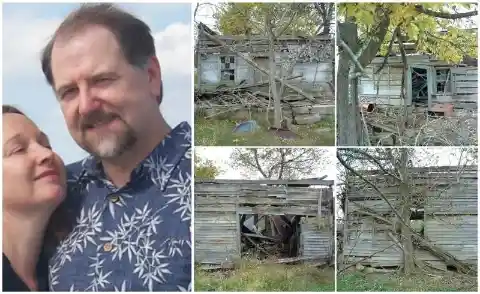
An antique fireplace originally stood on the east side, and there used to be a window on the west side. This was enough to motivate Richard and give him inspiration for the new cabin's layout. He would have to deal with the inside first as well.
Stacks of Junk
Snowfall, high winds, and Missouri rain had slowly but surely worn down the old house over four decades. The walls were collapsing, and the ceiling had wholly caved in. After taking a closer look, Richard saw how much stuff there was left in the cabin.

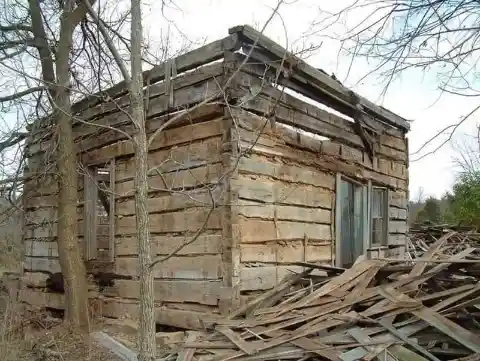
Before he could accomplish anything else, he would need to clear the place out—much of what was inside was just rotting, old wood. Richard cleared out all the rubbish, brought it to a dump, and left the area very spotless. After all, his friend had wanted him to throw away all the junk.
Started Cleaning His Place
The log cabin needed to be cleaned out. The abandoned cabin's interior was even more ruinous than its outside. Out of everything in the cabin, Richard was most eager to renovate the fireplace. He had the romantic picture of the “warm fire in the wild” in mind.


The interior section facing the window and the stairway to the second story would come next. The portion facing the front of the cabin finally became visible after some serious shoveling. Richard still had a large amount of work to do.
Intact Over The Years
Cleaning the interior was a serious challenge. After so many years of neglect, it was a miracle that the cabin had still been standing. If it hadn’t been covered by the clapboard, it probably would have fallen into dust and rotted long ago.
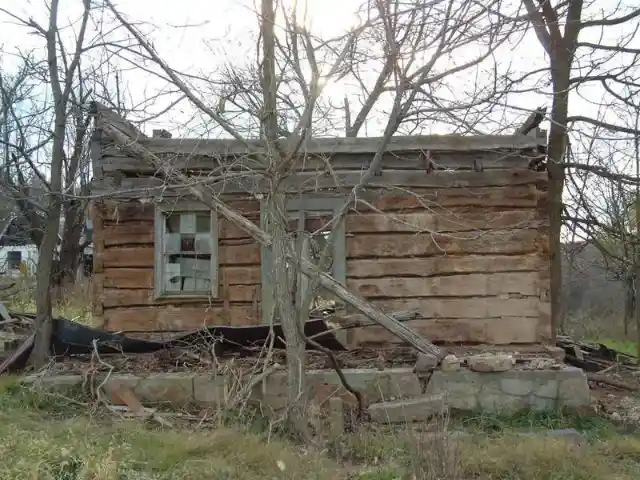
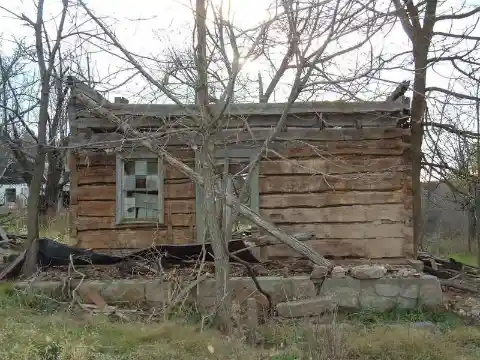
As useful as the clapboards had been in protecting the cabin from the deteriorating effects of the climate, they had to go. Richard had to haul all the junk on the inside away and get rid of the clapboard. How much of the cabin would be left at the end?
The Restoration Begins
As soon as the junk had been cleared out, Richard left to restore his abandoned cabin to its former splendor. Even though they were initially opposed to his plan, his family later supported him and assisted him in the endeavor.

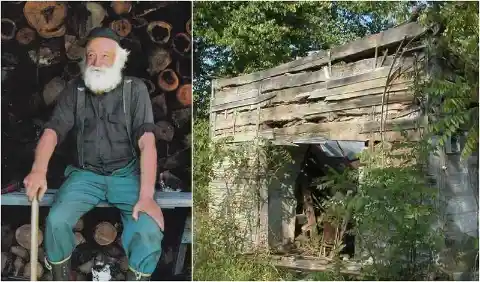
His children lent their muscles and know-how to the project, and before long, the cabin quickly began to show signs of improvement. But before the cabin could be considered anywhere near livable, they would have to contend with several unwelcome challenges.
Meticulous Inspection
Richard decided that he liked the cabin but not its location. He decided to move it to a more idyllic spot. Richard is a meticulous worker by nature and believes in the power of good organization. He wanted to catalog each log and label them according to their original position on the structure and the directions they were facing.

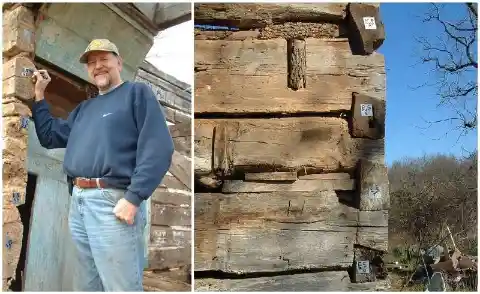
Aiken stated, "The system I chose [for the logs] was two directions. "First, the side: north, south, east, and west, and secondly, the direction that the log was pointing. For example, NW 4 denotes the fourth log on the North side pointing west."
Oak Beam Removal
Once he had a system in place to track the logs, Richard could start removing the beams for transfer. But they were enormously large and hefty, measuring over 20 feet long. The kind of machinery needed to pull the logs out wasn't within Aiken's reach or budget.
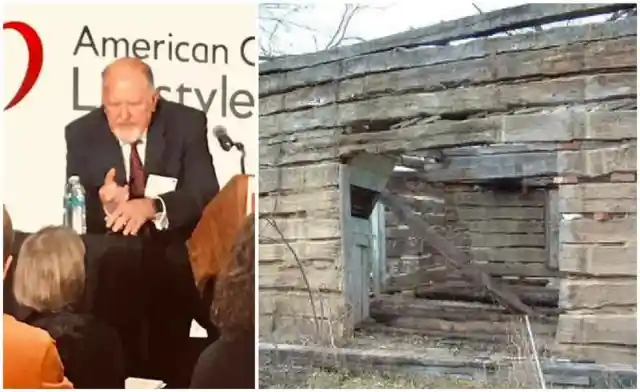
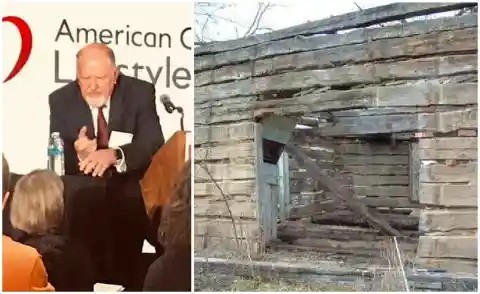
He talked to a friend, Two Bears, who suggested what he called a "brute force method," and in the end, he decided to follow his advice. As capable as he was, he knew he couldn't accomplish this on his own. Luckily, his friend was able to offer more than just advice.
More Help from Friends
Two Bears’ advice was to "Just poke the trees down," telling him that any wood that fell with that kind of power is "too rotten anyway." And so, like two boys playing a game of extra-large Jenga, the two buddies started poking around with a pole!
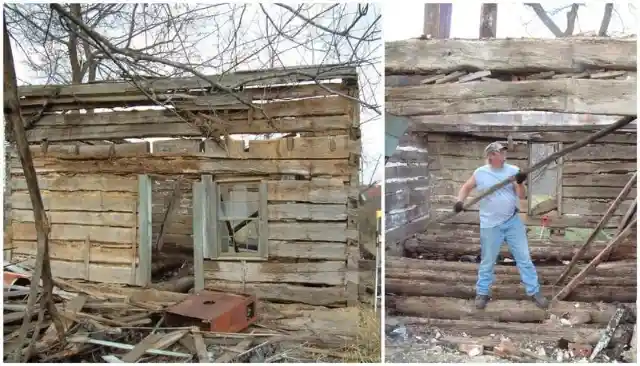
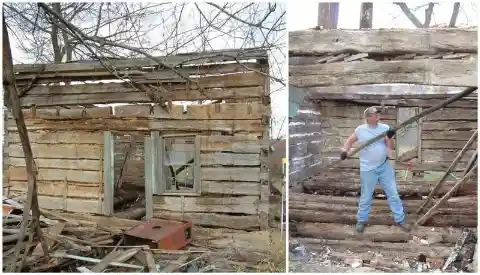
Richard initially opposed the notion because he didn't want to inflict any damage as the logs fell. Two Bears remarked, "If they break, that implies they were too rotten and not worth keeping." Richard ultimately trusted him, and almost all of the logs came crashing down intact.
The Crucial Step Was Site Selection
Richard only needed a little time to find the location where he wanted the cabin moved. He knew the new site would need to be elevated above any potential marsh areas. However, he wanted it to be adjacent to a body of water of some kind.
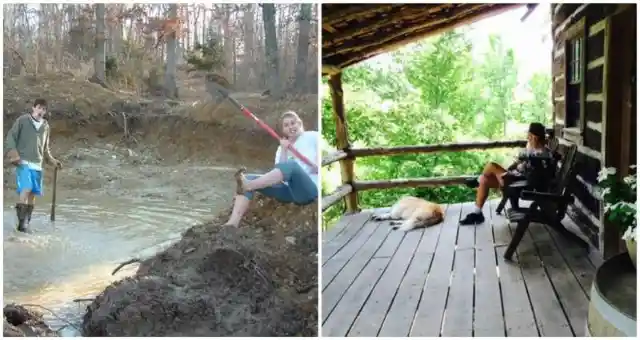
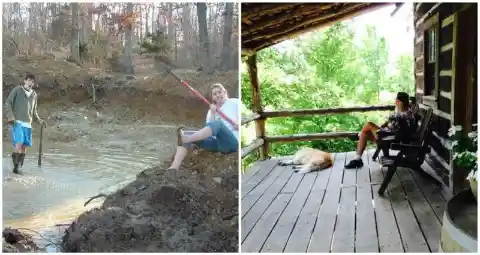
Richard also desired a good deal of open space to enjoy a view from the woodland home. It seems that he stumbled upon the perfect spot. "Remarkably, the site was near a concealed spring along the east side of the cabin, some 20 feet above a marshy area.”
In the Midst of Nature
To have a pleasant view, Richard wanted the front of his cabin to face north. The most exciting feature of the cabin, at least to Richard, was definitely the fact that it was situated in the middle of the woods, amid nature.
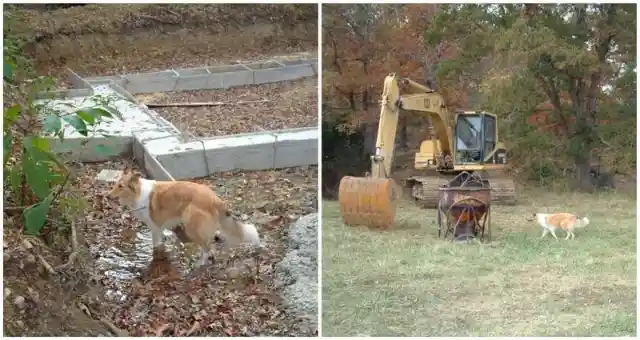
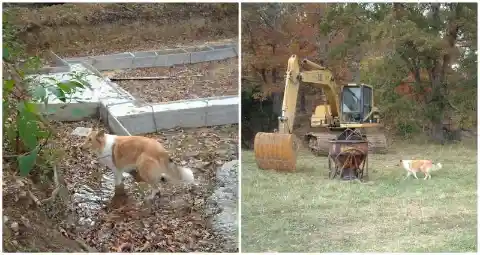
While Richard avidly respects nature, he lamented the loss of a tree in the movement of the cabin, as it had to be cut down so as not to impede his view of the woods. Some trees had to be used in the reconstruction of the cabin.
Six Feet Deep
Richard wanted a place to keep necessities like food and wine, so he set out to build a basement beneath the cabin. Having spent many days digging and excavating, the family soon reached bedrock six feet below the surface.
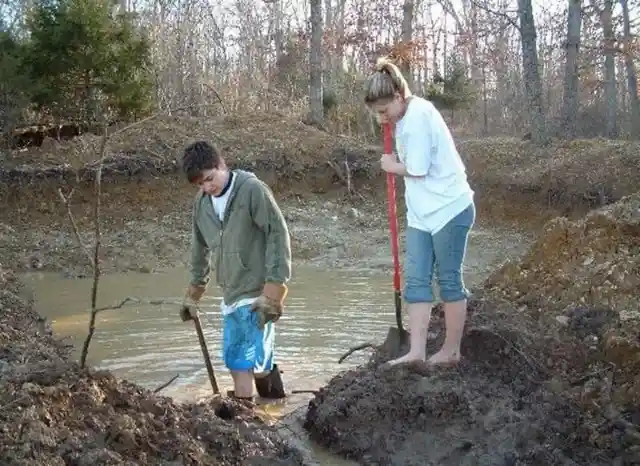
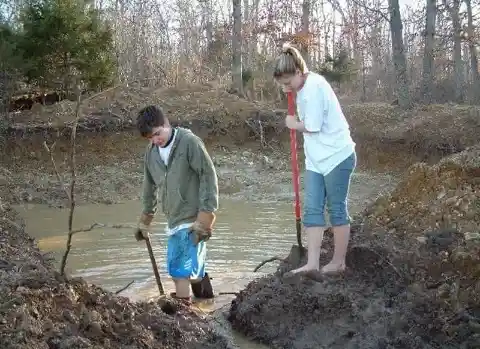
But Richard didn’t want to give up on his plans for a basement and let his family’s digging go to waste. The only solution was to go upward—to build the cabin aboveground. To do it, he’d need to lay steady foundations. But Richard is a smart guy, and with his knowledge of mathematics, it was no problem.
Structural Support
Richard thoroughly thought about how he could get the basement that he so desperately wanted. He layered the foundations with white oak, which grew nearby. The oak, as well as a little brickwork, would support the new floor. The cabin would be raised high enough for a basement level.
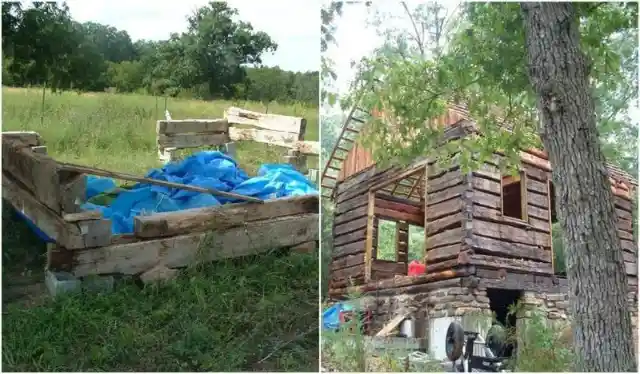
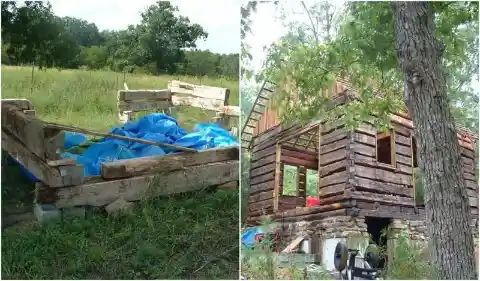
Even though Richard hated tearing down trees, it was a necessary step to make the cabin possible. While the cabin’s foundations were being finalized, the Aikens discovered something remarkable about the site of the cabin.
The Discovery Of A Hidden Lake
Richard was facing problems left and right, as though the universe seemed to be working against him. Richard's family learned something unusual about the cabin’s new location—it was perched on top of a water table.
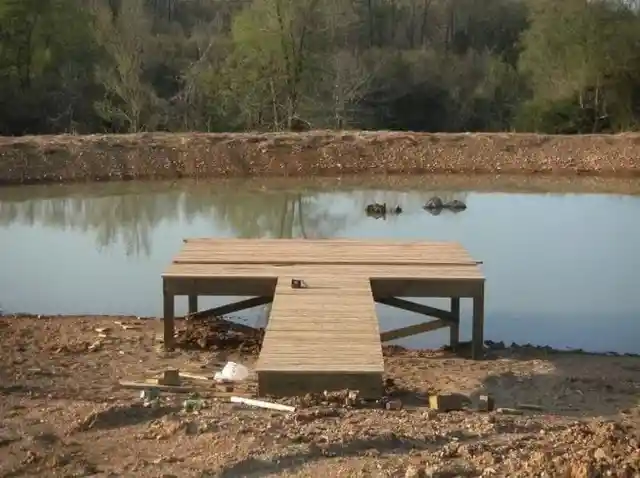
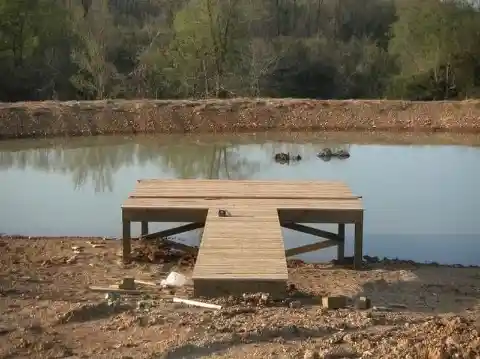
After plenty of digging, they discovered that a hidden lake had been at their feet the entire time. Richard immediately thought of constructing a nice wooden dock. But it would have to wait, as there was another problem brewing closer to home.
Losing The Support System
Richard and his family had already invested so much time in the remote cabin. The family was quickly losing interest in the project as so much time had passed, and the cabin still seemed impossibly unfinished. They were giving up so much of their own lives.


Richard’s three children understandably became unable to provide any further assistance, either in terms of labor or funds. Additionally, Mary, Richard’s wife, pressed him not to make any further financial commitments to the cabin. He was now working on a shoestring budget.
Building A Solid Foundation
Richard knew that any house should be built on a strong and unyielding foundation. He began by excavating three-foot-deep holes. Then he placed some flat rocks on top of them, creating a rock-steady base for the structure.
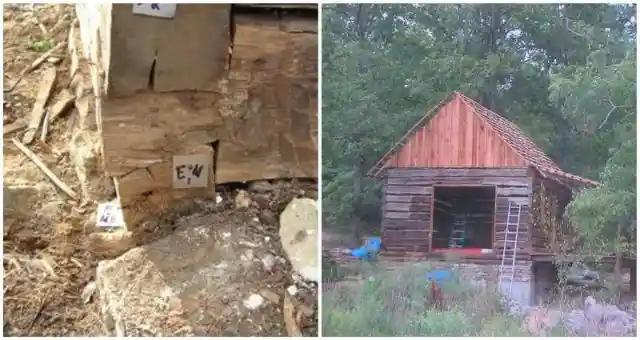
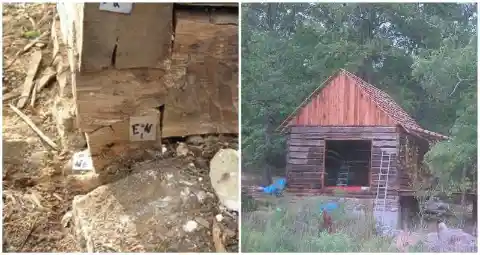
He did admit that most cabin builders would probably not go to all this trouble, particularly if the ground was already firm enough. But he had no intention of taking risks after all the work he had done so far. The bedrock issue came next.
Managing the Bedrock
The next step was determining the depth of the bedrock beneath the location of the cabin. In Missouri, natural bedrock generally appears at about five feet below. Richard was confident that the bedrock would not be any lower, so he moved ahead with his plans.
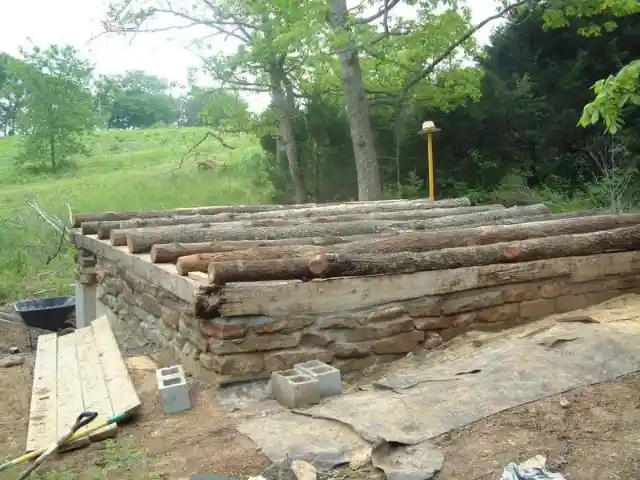
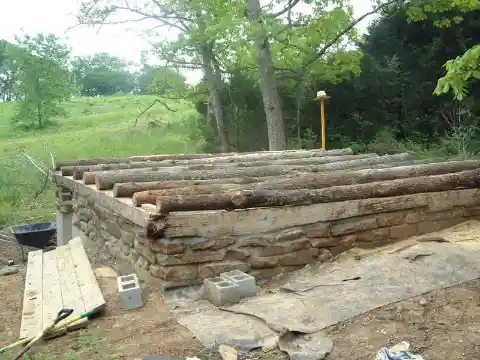
That meant that he could begin work on the basement. The cabin itself would be one foot above the ground. They would need to erect a short flight of stairs to get to the front door. Better high and dry than stuck in the muck!
Making Progress
He placed masoned stones over the concrete base before placing processed oak on top of those stones. The cabin project was revived, and it began looking like a livable structure at last. Richard made use of the majority of the original logs.
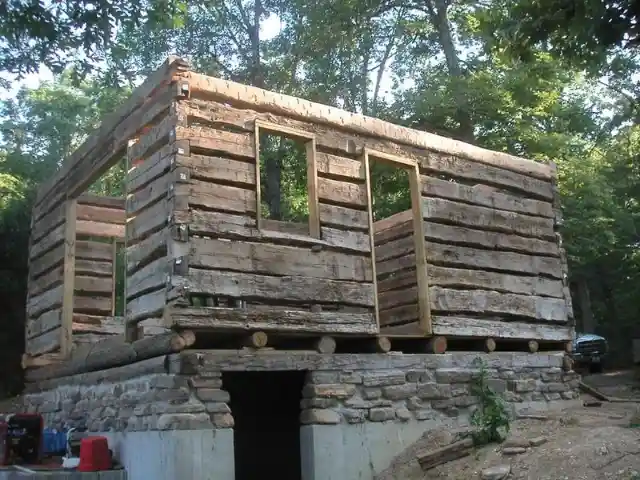
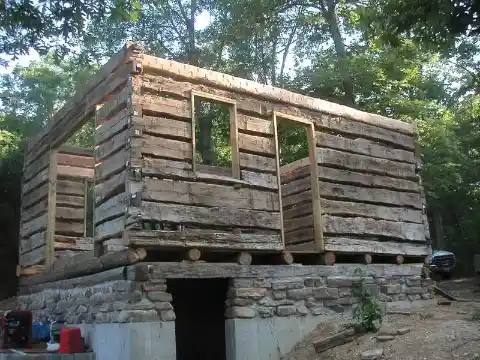
Richard had to, regrettably, cut down a few nearby trees to finish the walls. A couple of white oak trees were felled and used to reinforce the foundation. Another was felled because it was too close to the cabin. Aiken believed their sacrifice would not be in vain.
The House Entrance Position
Richard couldn't resist documenting his progress with photography to record his progress because, after only a few days of work, the entrance was almost complete. Richard's son is pictured here standing beside the front door’s planned location.
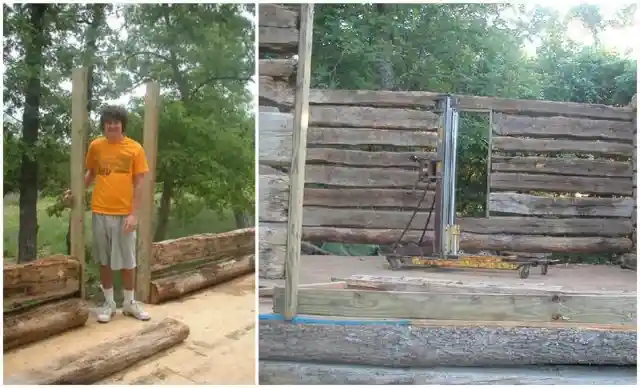
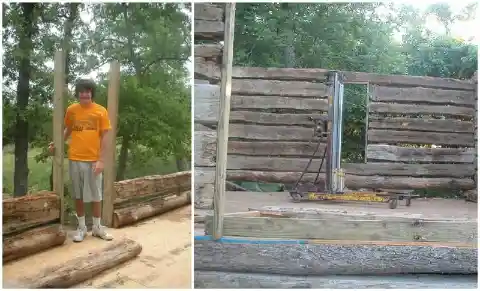
This part of the project was the easiest, according to Richard. "We have placed the first couple of logs around the structure according to the labeling,” he wrote. That meticulous log labeling from much earlier seems to have paid off.
Placing The Rafters And The Beams
The cabin was progressing rapidly. So, how exactly did Richard arrange all of those substantial beams? Putting them back together was undoubtedly more difficult than taking them apart. Richard noted that getting a crane into the woods would have been expensive and overly challenging.
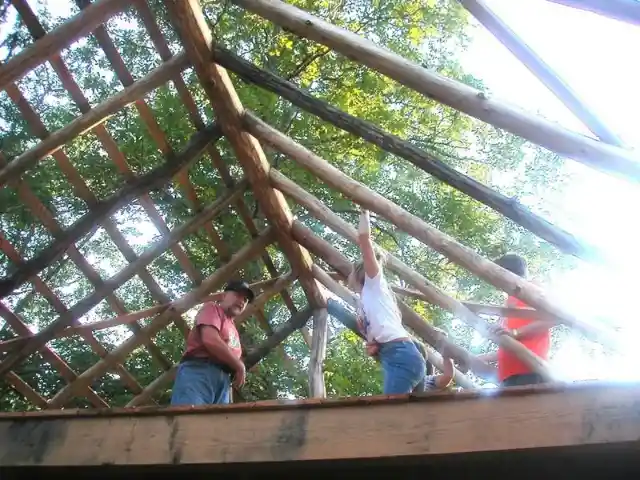
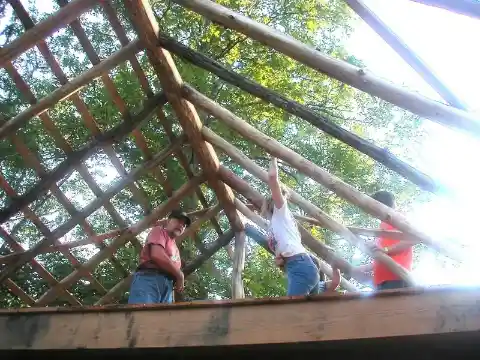
As a result, Richard built the rafters after the logs were moved into position using "a manually powered heavy-duty material lift." The rafters offered space for the second-floor loft that Aiken had intended to build. It was now time to complete the roof.
Filling Up The Gaps
Although the logs were in place, there was plenty of space between each one. Richard "chinked" the wood cabin by using steel mesh and chicken wire. Chinking is a process in which builders use whatever is available to cover the gaps in a wall.
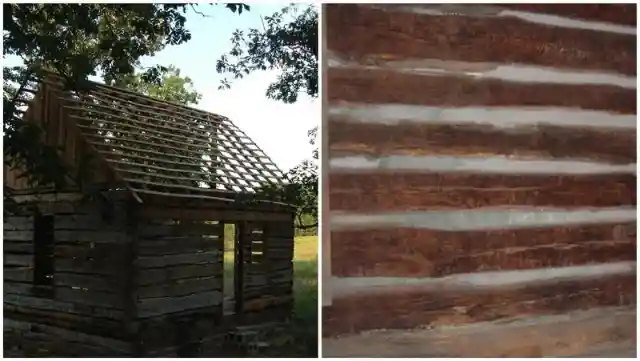
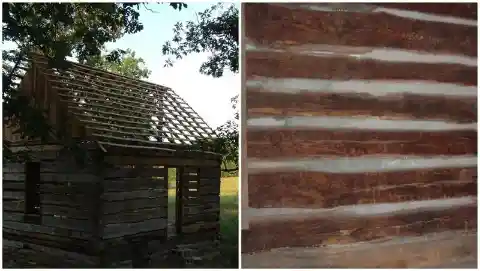
The family initially attempted to use "backer rods," but they turned out to be too pricey. Styrofoam proved to be difficult as well. Richard ultimately chose chicken wire as his material. This inexpensive, pliable medium also performed well with daubing material.
1830 Style
Thanks to all the work Richard and his family had put into it, it didn't take long for the cabin to begin taking shape. Before starting the project, Richard did his homework since he intended to build the log cabin in the traditional 1830s style.
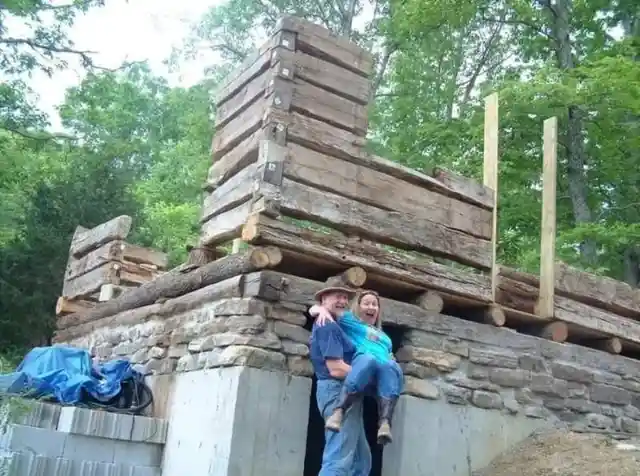

It started to feel rewarding as the cabin took shape, despite all the difficulties and challenges Richard and his family had experienced throughout the project. But how much did it cost? He says he spent a total of $30,000 to $40,000 on the restoration job.
Maximizing Old Oak Trees
Thanks to the sacrifice of some nearby trees, the family was able to complete this project without having to drag resources from afar. Richard made every effort to avoid cutting down too many oak trees to make this project possible.
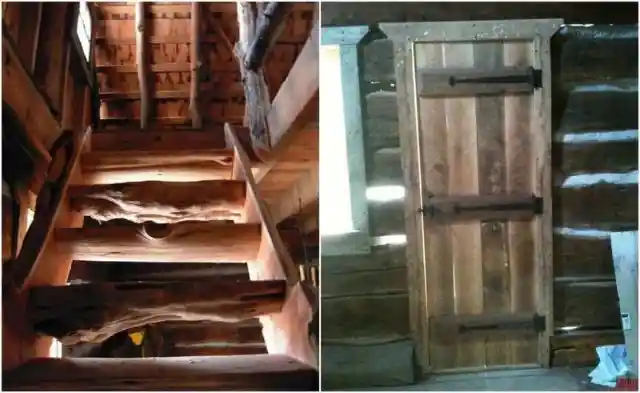
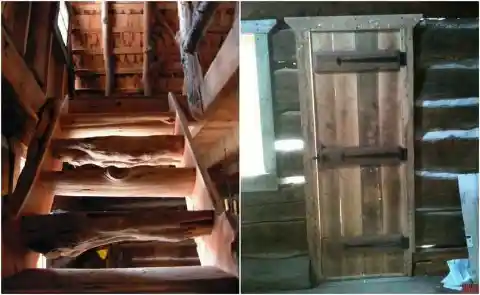
The family also constructed the staircase from a nearby tree that had already fallen. In addition to making beautiful doors and windows, a carpenter assisted them with many of the designs, large and small. But that wasn’t the pinnacle of their success.
Mesmerizing Fireplace
Richard built the fireplace himself and ensured it was as effective as possible in providing heat to the cabin. It required considerable thought because it was something he’d never done before. “Everything needed to be calculated precisely, he said.” The fireplace's inside was bricked with fiery golden Arkansas Hackett stone.
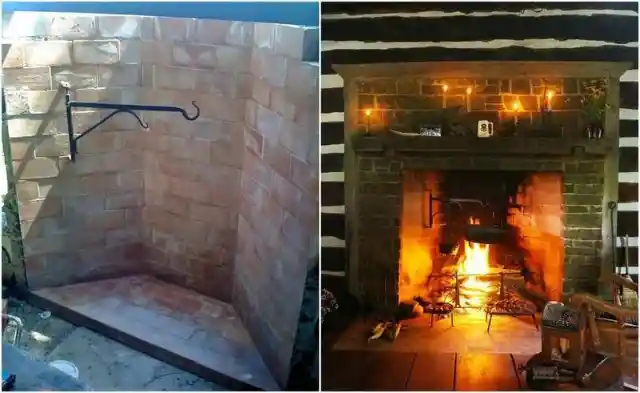
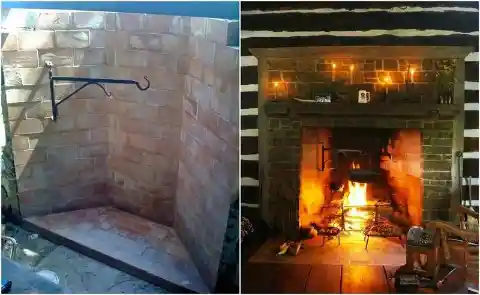
Since Richard intended to use the fireplace for cooking, just like the folks who most certainly lived in the original 1830s cabin did, he spent a lot of time and effort building it for practical use. According to Richard, "Laying the stones required enormous labor but culminated in an enduring monument."
Honoring History
The cabin was almost ready for occupancy. But the lighting was a potential problem that Richard had to consider during the planning stage. Richard chose not to add plumbing or electricity because he wanted to honor the building's past.
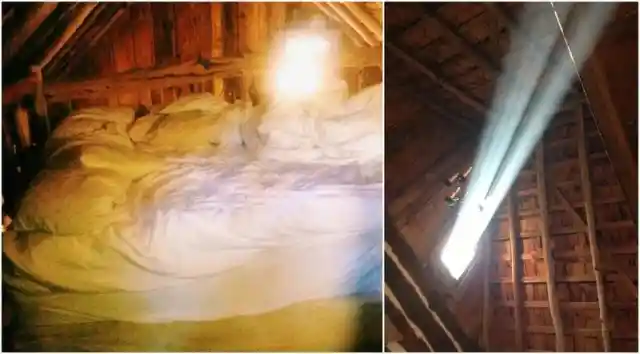
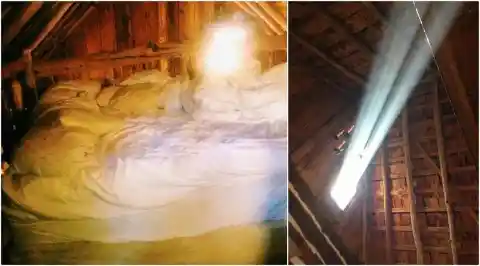
Richard’s treasured loft had a massive roof window that brought increased visibility to the cabin's interior. Candles would be used for lighting at night to be more eco-friendly. The loft looks like the ideal place to take a nap, although it may not be obvious from this picture.
A Gift From Amish Community
As he was getting close to finishing his project, a local Amish family who had watched Richard construct the cabin over the previous ten years gave him a touching present to help make the place feel a little more homely.
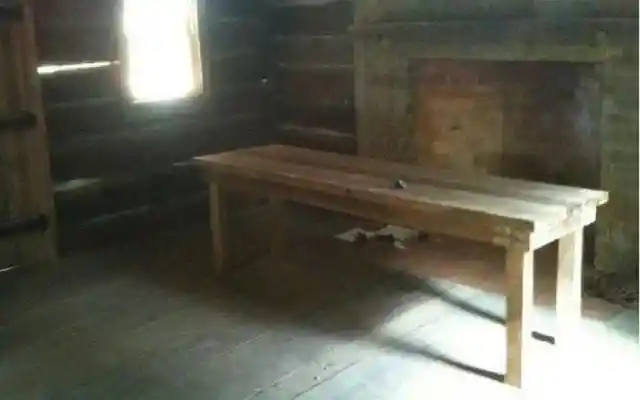
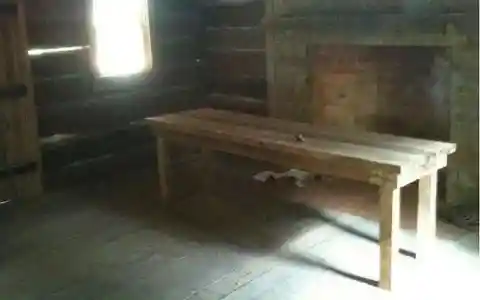
The local Amish family created a handmade 8-by-3-feet wide dining table for Aikin to put in the cabin where his family could sit and enjoy their meals. The table was very portable and fit perfectly. However, Richard eventually had to clarify that the table would not, in fact, be a housewarming present.
Family’s Vacation House
Richard revealed that he would not be relocating to the cabin after spending the previous ten years of his life remodeling it. He had started out with that in mind, but as the project progressed, he came to the conclusion that it would be best to remain in the city and use the cabin as a vacation house for his family.
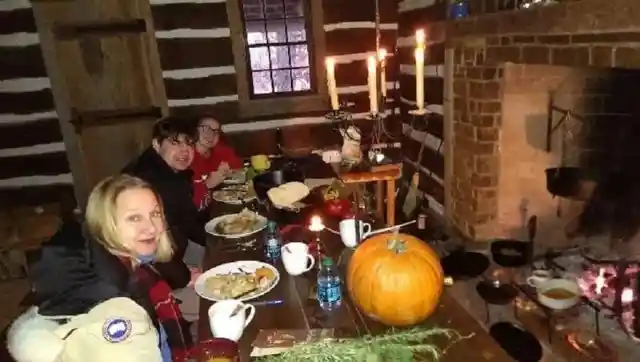
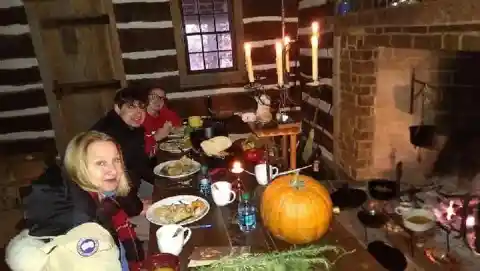
Richard's family was probably very pleased. Now they had a fantastic vacation destination and a second house instead of a permanent residence without electricity. The Aiken family then decided to tell their story to the world.
Social Media Sharing
Richard decided to let the world in on the transformation of his new cabin after realizing that it would be a waste to keep this incredible experience to himself. Richard didn't know much about social media, so he just started posting pictures of his cabin on his Instagram page.

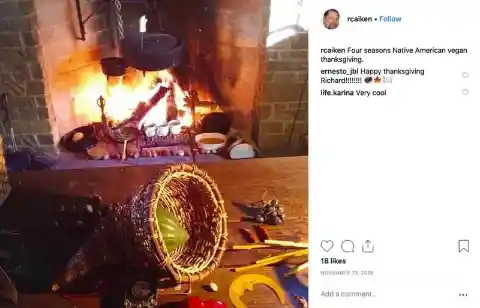
His family was pictured eating Thanksgiving dinner in the cabin in his first post. To serve as the centerpiece of the feast, Richard prepared a cornucopia. Fruits, vegetables, and other tasty bites were placed inside. The "vegan hillbilly" would, however, quickly go viral.
Posts Become Viral
Richard's story stands out, in part, because of how expertly he and his family captured the overall process on film. He posted pictures of the transformation on websites like Reddit and Instagram when the building was finished to share his story with the world.


It goes without saying that the Aikens' efforts captured the internet’s attention. Many people now wish to follow Richard's example. But the most amazing part of this tale is how much experience Richard gained since he first acquired that cabin more than ten years ago.
Mission Accomplished
After a lot of hard effort, Richard eventually achieved the simple way of life he thought nature meant for us. After ten years of arduous work, sacrifice, and cooperation on the part of Richard and his family, the cabin was finally finished.
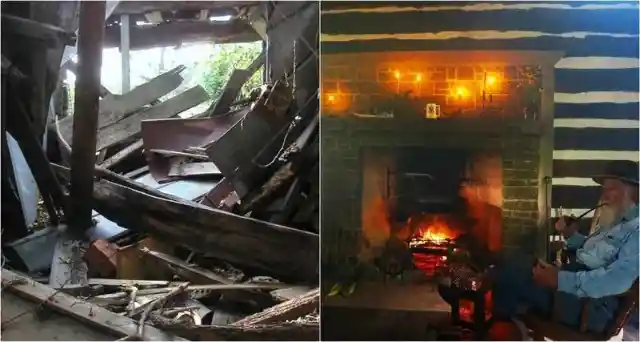
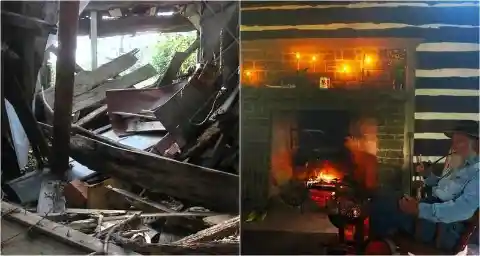
What was once a hollowed-out carcass of a hut was now a warm, lovely home that only architects and skilled builders could dream of creating. Richard achieved in his life something that many of us only imagine.
A Complete Transformation
It's like night and day when you compare pictures of the cabin now to when Richard initially purchased it. Well, that’s how Dr. Richard Aiken, a "65-year-old mathematician having little construction knowledge," rebuilt a centuries-old rotting, abandoned log home.
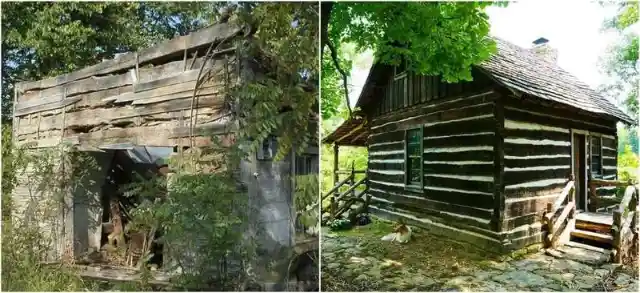
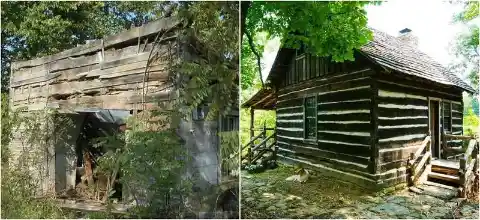
The transition took a lot of pain and sweat, but it seems worth it when you realize how much enjoyment he now gets out of it. Richard still thinks the best part of the cabin is its building process. “I'd like to think I'll never be finished building this log cottage,” he said.